IBM THINK - a new application about the history of progress

Good afternoon, dear Habrachitel!
Today I would like to tell you about IBM's new mobile encyclopedia, which gathered hundreds of facts from the history of scientific and technological innovations that improve people's health, create clean energy and safer, more comfortable for life and less crowded cities.
Brief description of the application:

')
Name: IBM THINK
What's inside: interactive content in the form of thousands of images and historical facts
Compatible devices: iPad and Android tablets
Cost: Free
Size: 513 MB
English language
What does this look like?
The application consists of 6 parts:
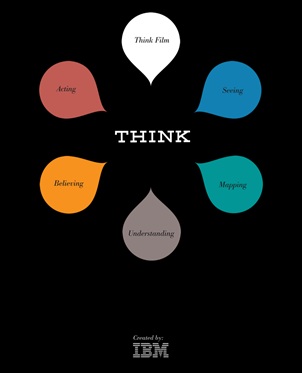
Seeing
Mapping
Understanding
Believing
Acting
Think film
Seeing
The section is presented in the form of an interactive timeline, demonstrating in chronological order how the use of measurement technologies has evolved from wooden accounts to a tunnel microscope.
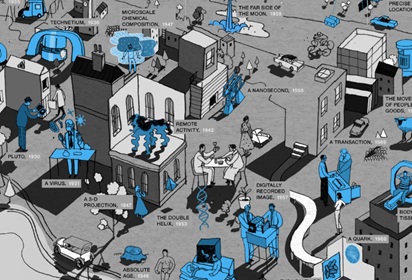
This section includes many historical facts:
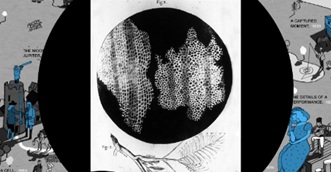 In 1665 English scientist Robert Hooke for the first time uses a microscope in scientific biological research to describe a plant cell observed in a layer of cork.
In 1665 English scientist Robert Hooke for the first time uses a microscope in scientific biological research to describe a plant cell observed in a layer of cork.Later on, improved microscopes were used to study human cells and bacteria.
 In 1947 English physicist Deneir Gabor in the course of experiments to increase the resolution of the electron microscope created a new way to record images - holography.
In 1947 English physicist Deneir Gabor in the course of experiments to increase the resolution of the electron microscope created a new way to record images - holography.Currently, holograms are used in the field of security and are a reliable way of visual protection of plastic cards.
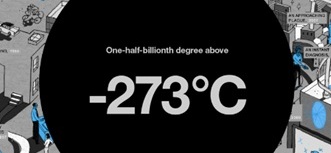 In 2003 science has determined the lowest attainable temperature - minus 273.15 degrees Celsius. The record was set in the laboratories of the Massachusetts Institute of Technology. In the future, ultra-low temperatures can help in the production of nanotechnology.
In 2003 science has determined the lowest attainable temperature - minus 273.15 degrees Celsius. The record was set in the laboratories of the Massachusetts Institute of Technology. In the future, ultra-low temperatures can help in the production of nanotechnology.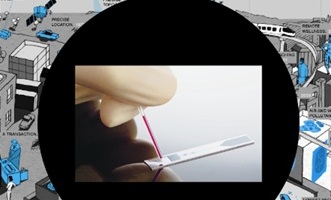 In 2009 Based on the research, IBM scientists have developed a silicon-based chip laboratory that can detect 16 different diseases within 15 seconds.
In 2009 Based on the research, IBM scientists have developed a silicon-based chip laboratory that can detect 16 different diseases within 15 seconds.One day, in local clinics, the chip will make instant, accurate and inexpensive diagnoses for many diseases.
What do you think, what technologies are discussed in the following pictures?


12


3 4
Mapping
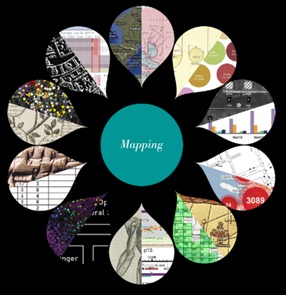 The section talks about how drawings, charts, graphs and tables from the first geographical maps to modern visualization systems help people by collecting and systematizing large amounts of information.
The section talks about how drawings, charts, graphs and tables from the first geographical maps to modern visualization systems help people by collecting and systematizing large amounts of information.Cards save lives
 In 1854 John Snow notes on the map of the building where people died from cholera, devastating London in those times. In the course of the study, John noticed that cholera spreads through the gastrointestinal tract from the water column, located on Broad Street, and not by airborne droplets, as previously thought.
In 1854 John Snow notes on the map of the building where people died from cholera, devastating London in those times. In the course of the study, John noticed that cholera spreads through the gastrointestinal tract from the water column, located on Broad Street, and not by airborne droplets, as previously thought. In 2010 After the earthquake in Haiti, SMS, e-mail and Twitter on an open source map indicate the points of destruction, blocked roads and the location of the victims, thereby providing rescuers with accurate information in real time.
In 2010 After the earthquake in Haiti, SMS, e-mail and Twitter on an open source map indicate the points of destruction, blocked roads and the location of the victims, thereby providing rescuers with accurate information in real time.Schemes create knowledge
 In the 16th century, the book "On the structure of the human body" makes a revolution in medicine. In it, for the first time, the text is supported by realistic drawings based on an autopsy of human corpses. A thorough study of the organs and the whole device of the human body takes medicine to a new level.
In the 16th century, the book "On the structure of the human body" makes a revolution in medicine. In it, for the first time, the text is supported by realistic drawings based on an autopsy of human corpses. A thorough study of the organs and the whole device of the human body takes medicine to a new level.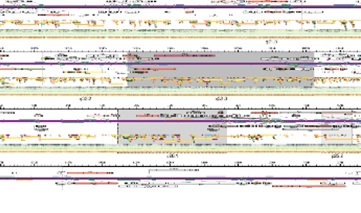 In 2007 John Craig Venter publishes the first complete map of the human genome, which contains its own DNA. Reading the genetic code gives information about a person's susceptibility to certain diseases, which will help to make medicine truly individual.
In 2007 John Craig Venter publishes the first complete map of the human genome, which contains its own DNA. Reading the genetic code gives information about a person's susceptibility to certain diseases, which will help to make medicine truly individual.Understanding
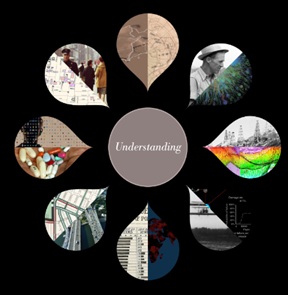 In chronological order, the section describes how “modeling situations” now helps to cope with tasks that previously seemed impossible.
In chronological order, the section describes how “modeling situations” now helps to cope with tasks that previously seemed impossible.How to increase grain yield?
 In 1944 The Nobel Prize-winning agronomist Norman Borlaug is cultivating new highly productive wheat varieties through inhuman efforts. Norman manually pollinates thousands of plants to produce varieties that are resistant to different climatic conditions and most diseases. The discovery saves millions of lives and billions of acres of agricultural land.
In 1944 The Nobel Prize-winning agronomist Norman Borlaug is cultivating new highly productive wheat varieties through inhuman efforts. Norman manually pollinates thousands of plants to produce varieties that are resistant to different climatic conditions and most diseases. The discovery saves millions of lives and billions of acres of agricultural land.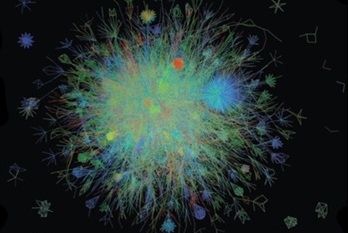 In 2010 scientists are studying the behavior of plants at the genetic level. Using probabilistic modeling, researchers observe the relationship between the grain genes (the genetic network of plants is depicted on the right in the picture) and, based on the results of modeling, create new improved varieties.
In 2010 scientists are studying the behavior of plants at the genetic level. Using probabilistic modeling, researchers observe the relationship between the grain genes (the genetic network of plants is depicted on the right in the picture) and, based on the results of modeling, create new improved varieties.How to choose a medicine?
 In the 1990s, antiretroviral therapy for HIV infection is vital for those who are sick. But difficult daily medication can cause harmful side effects and even create drug resistance depending on the patient's physiology. To avoid this, doctors rely on trial and error, backing them up with costly and time-consuming tests that measure the effectiveness of each available drug.
In the 1990s, antiretroviral therapy for HIV infection is vital for those who are sick. But difficult daily medication can cause harmful side effects and even create drug resistance depending on the patient's physiology. To avoid this, doctors rely on trial and error, backing them up with costly and time-consuming tests that measure the effectiveness of each available drug.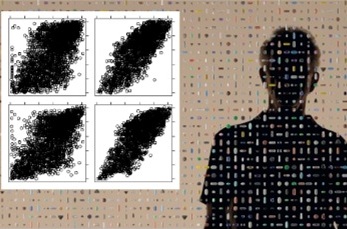 In 2010 A non-profit European research organization is analyzing data from 50,000 patients infected with HIV and 100,000 types of therapy. Today's mining systems and the world's largest database help physicians give individual drug recommendations to patients to fight infection.
In 2010 A non-profit European research organization is analyzing data from 50,000 patients infected with HIV and 100,000 types of therapy. Today's mining systems and the world's largest database help physicians give individual drug recommendations to patients to fight infection.Believing
How to form a belief in transformation?
People involved in projects to improve the world around us share their observations.

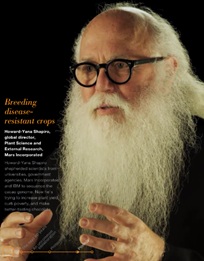

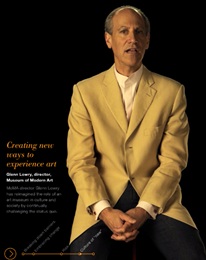
Acting
This section is an interactive globe that has gathered the most inspiring examples of systemic progress around the world!
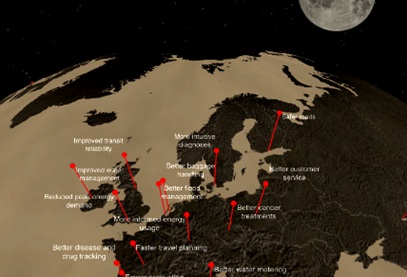
Acting talks about how:
 Kyushu University cuts energy consumption
Kyushu University cuts energy consumption Automercados Plaza's chain stores use data analysis to monitor their stocks.
Automercados Plaza's chain stores use data analysis to monitor their stocks. Thai hospital improves the quality of care
Thai hospital improves the quality of care Singapore predicts the situation on the roads
Singapore predicts the situation on the roads Memphis police reduces crime
Memphis police reduces crime Ho Chi Minh City improves the functioning of cities
Ho Chi Minh City improves the functioning of cities La Junta Nacional de Auxilio Escolar y Becas improves lunch for students in Chile
La Junta Nacional de Auxilio Escolar y Becas improves lunch for students in Chile BlueSky improves education in China
BlueSky improves education in ChinaThere are a lot of facts in the section that are difficult to list in one article :)
Think film
The 10-minute film consists of several stories about how progress that makes the world better was made possible through the interaction of people and technology.
Think Film you can watch here without downloading the application:
If you want to read more about how people have been helping people since prehistoric times of discovery and new technologies, you can download the IBM THINK application from the following links :)
iPad: itunes.apple.com/us/app/ibm-think/id546222093?mt=8
Android: play.google.com/store/apps/details?id=com.ibm.thinkapp
Source: https://habr.com/ru/post/149597/
All Articles